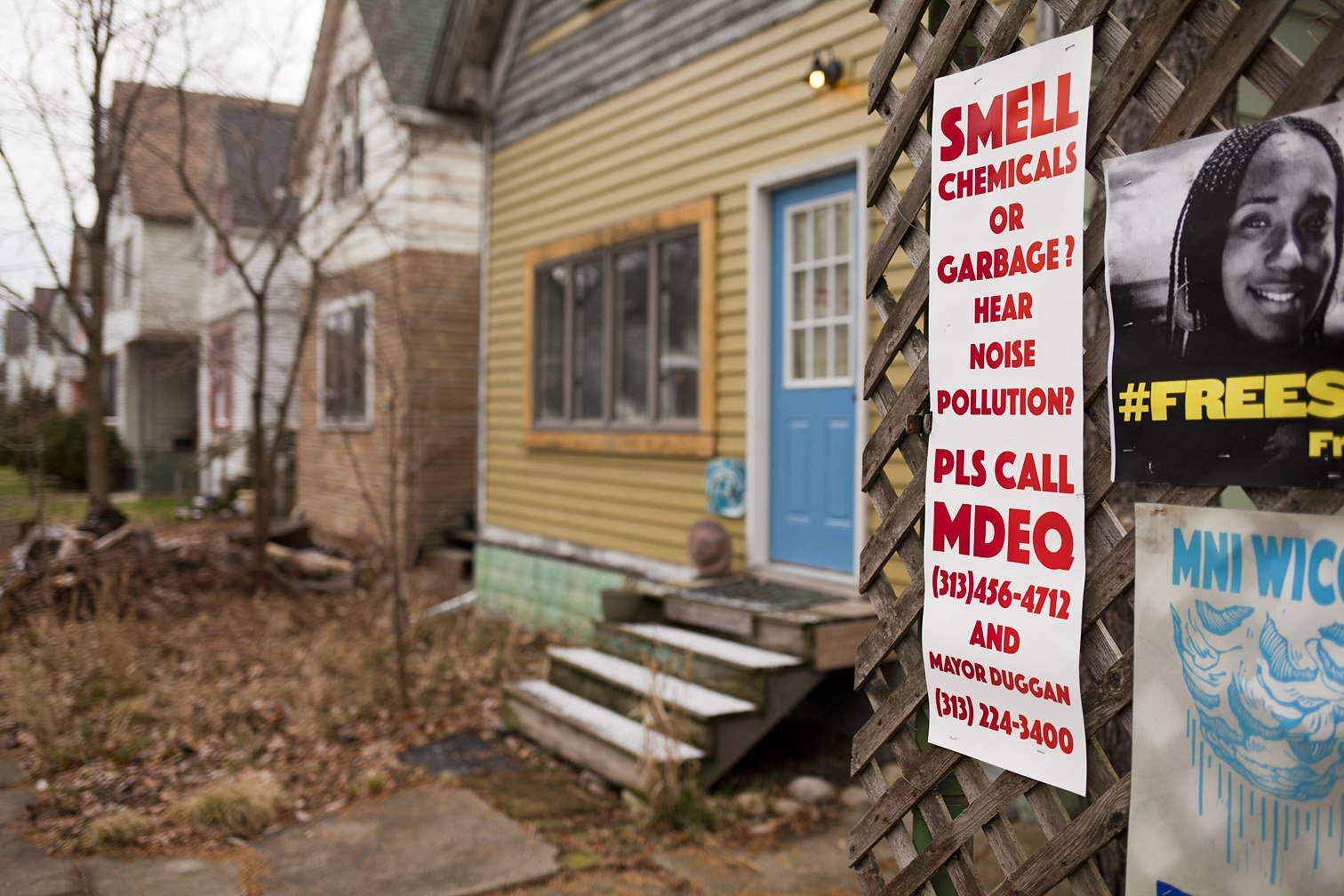Climate Policy Loopholes Are Keeping Deadly Waste Incinerators Alive
By Jillian Du and Deborah Behles
By Jillian Du and Deborah Behles

After 30 years of community opposition and hundreds of emissions violations, one of the largest waste incineration plants in the country finally shut its doors for good.
Since 1989, neighborhoods near the Detroit Renewable Power (DRP) incinerator in Detroit, Michigan, have kept their windows painted shut and children from playing outside due to the facility’s toxic pollution, pungent odors of “rotting garbage,” and chemical fumes. Before the DRP plant closed in Detroit, hospitalization rates for asthma were among the highest in the city for residents in the zip codes adjacent to the DRP incinerator. And unsurprisingly, the plant’s operations came at a high cost to already-vulnerable and marginalized residents – 87 percent of whom were people of color and 60 percent of whom lived under the federal poverty line.
“A facility that exceeded pollution emissions standards more than 750 times between 2013 and 2018 was, in effect, considered a ‘climate solution’ by policymakers.”
Despite these serious and life-altering impacts, the DRP is considered “clean” and “renewable” in many states. Before it was shut down, DRP burned close to a million tons of trash every year to generate steam, heating about 100 buildings in the city’s downtown. Though only a small amount of energy, this meant that the facility was considered a source of “renewable energy” and received associated subsidies. In other words, a facility that exceeded pollution emissions standards more than 750 times between 2013 and 2018 was, in effect, considered a “climate solution” by policymakers.
Simply put, burning trash for energy is about as dirty as it gets. Based on the Equity Fund’s recent policy brief, Waste Incineration: Deeply Harmful and Outdated, we explain why burning trash should not be part of the clean and renewable energy future:
Incinerators are incredibly expensive to run. They are among the most expensive options to produce electricity and manage waste. Few plants have been built since the 1980’s, and many facilities have closed or are closing soon. A major reason remaining facilities stay financially afloat is because they are able to benefit from incentives and subsidies for “renewable energy” and waste diversion.
In 23 states, waste incineration is still considered a “renewable energy” source. Advocating for the removal of incineration plants from government definitions of “renewable energy” would help to shift credibility and resources away from waste incineration and towards actual renewable energy generation like wind and solar.
Similarly, some states categorize incineration as a recycling method, which allows incinerators to earn subsidies and stay in operation. Burning trash is not recycling it. Removing waste incineration from a list of acceptable recycling methods can help to redirect investment into more sustainable waste management systems. For example, zero-waste measures such as composting, recycling, and source reduction are much better for the air, climate, health, and jobs.
“It is time for governments to remove policy incentives that keep incineration afloat and instead direct resources to cheaper, safer, and cleaner ways to divert waste and produce clean energy. ”
The closure of DRP is a massive victory representing decades of community activism from the Breathe Free Detroit campaign, spearheaded by local residents, Zero Waste Detroit, East Michigan Environmental Action Council, the Great Lakes Environmental Law Center, and the Ecology Center. Some key milestones include Breathe Free Detroit and the Great Lakes Environmental Law Center’s report detailing the harmful emissions released by the plant, a petition with 15,000 signatures arguing for the plant’s closure, and a threat to sue under the Clean Air Act. Citing rising financial and compliance costs, DRP decided to shut down in 2019 and is set to be demolished later this year.

The environmental justice win for the Breathe Free Detroit campaign provides an example of advocacy for others working to close waste incineration plants in their communities. What should be an obvious decision to phase out the expensive and damaging practice of burning trash required a bedrock of organizing led by community-based and grassroots advocates. Fights are still ongoing across the country, such as in Baltimore, Minneapolis, and California (read more about each in the policy brief). But the challenge will remain as long as governments continue to consider burning trash a viable “climate solution” at the expense of surrounding communities.
The case for waste incineration could not be more clear: it is an outdated and deeply harmful practice. It is time for governments to remove policy incentives that keep incineration afloat and instead direct resources to cheaper, safer, and cleaner ways to divert waste and produce clean energy.